
Established Since 1988
NEA Licence No. NEA190407/1810M/N06
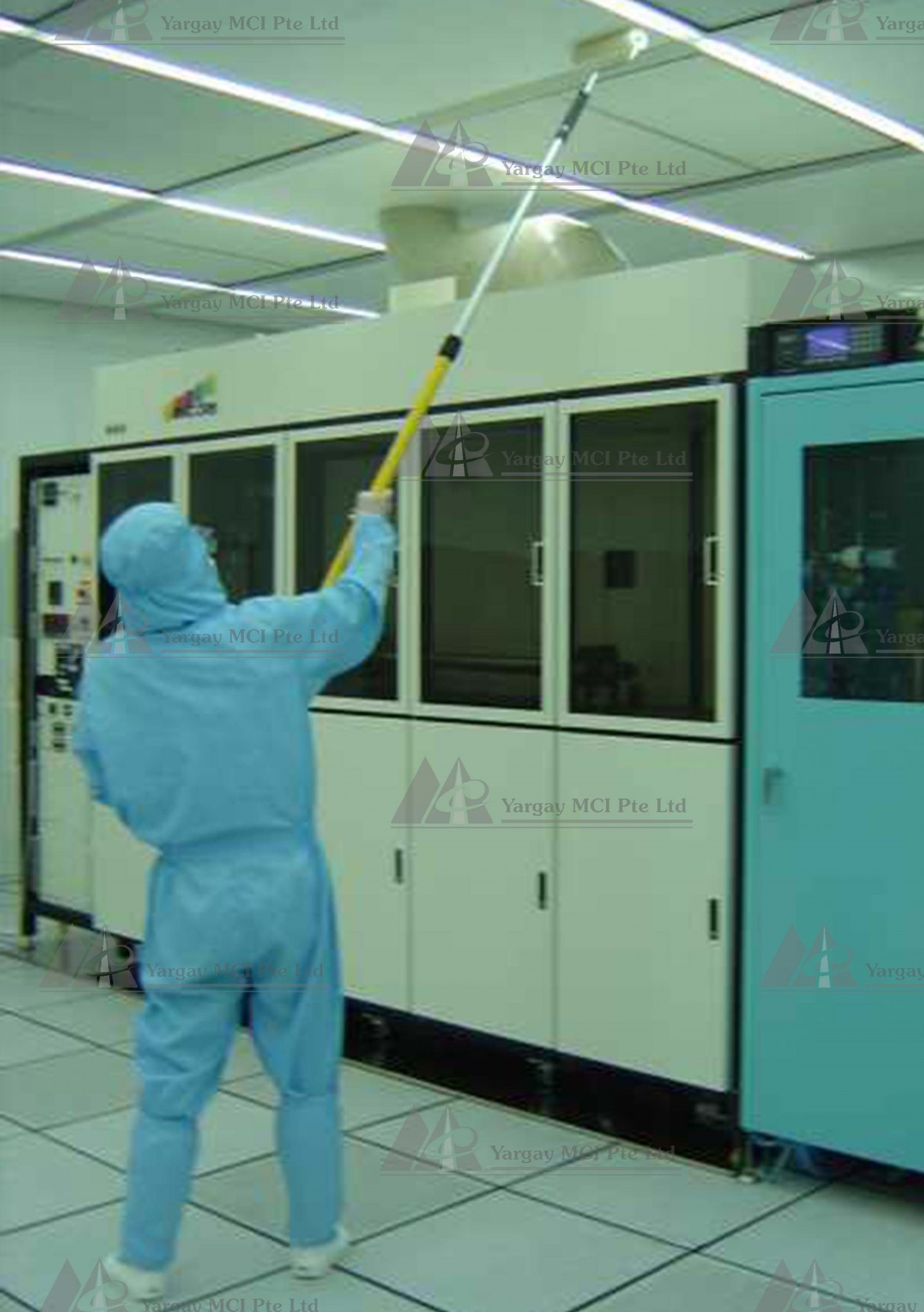
Yargay MCI’s Cleanroom Services cover the needs of new and existing cleanrooms. So, whether you need a Post Construction Cleaning for a newly constructed cleanroom or Technical Cleaning to the one you are already running.
Our Cleanroom Cleaning Services help improved product quality and yields related to a contaminated environment – and best of all, you have peace of mind knowing that our Specialists are specifically trained for your critical environment.
The awareness to apply regular disinfectant has seemingly increased in the midst of the recent Covid-19 pandemic. Yargay is always at the forefront of new technology and implementation. We now introduce the latest mobile UV-C Light Disinfection Machine to disinfect your cleanroom after every deep cleaning work, as an added precaution to disinfect their cleanroom environment.
These Mobile UV-C Light Disinfection machine are built with a lamp module emitting powerful ultraviolet-C(UV-C) light. This light help decontaminate the cleanroom environment by tearing apart strands of viruses DNA .
As UV-C light kills up to 99% of bacteria and has been clinically proven to eliminate viruses. Your cleanroom environment will be kept safe and healthy for your team to work safely with the help of this machine.
Particulates are deposited directly onto surfaces such as floors, walls, work surfaces, and machinery. They may not affect products at the time they are deposited, but over time they pose an increasing threat to your products by causing physical disturbance and eventual breakdown. Even with modern technology and stringent procedures to control particulate contamination, you are still only controlling a portion of cleanroom dangers.
Cross Contamination is the most significant cause of downtime and loss of yield within a cleanroom environment. Semiconductors, Pharmaceuticals, Manufacturing Centers and Testing Facilities all require different operation methods and designs.
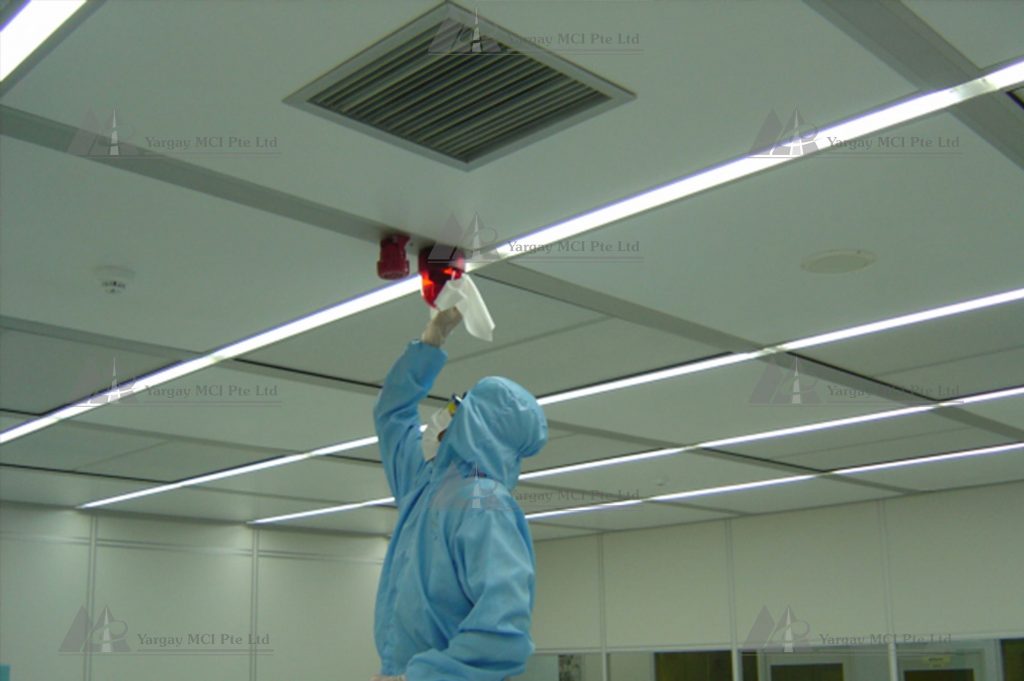
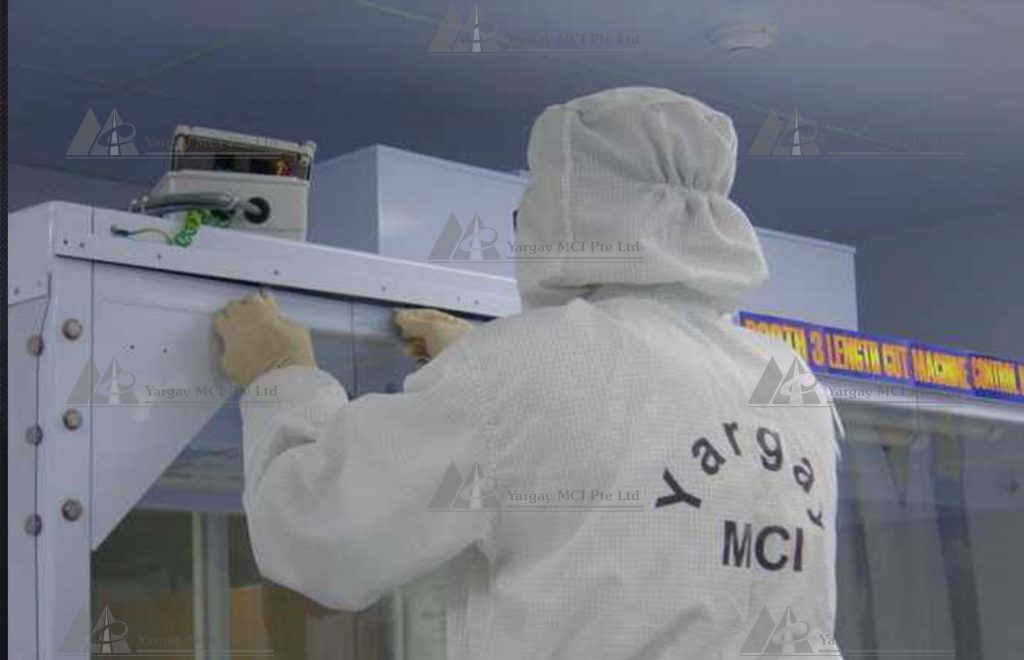
Yargay MCI can custom fit a plan for cleaning and maintenance that will compliment your company’s work flow.
Cleanrooms consist of specialised materials, chemicals, equipment and protocol unique to each facility. As the front-line defense in protecting the customer’s investment, it requires trained personnel, application-specific cleaning tools & materials, a well-designed cleaning methodology, a verification program and a commitment to ensure that cleanroom maintenance demands, receive the highest priority from all involved. These services should also be applied to laboratories and other critical environments.
That’s why Yargay MCI makes a substantial commitment to on-going training. Our Specialists are permanent employees that are classroom educated with hands-on experience at cleanroom site training facility. Our proprietary training programs are in accordance to IEST’s (Institute of Environmental Sciences Technology) standards which include; cleanroom protocol, cleanroom cleaning processes and methods, workplace and general safety awareness and other specialised disciplines.
Cleanroom maintenance is a very niche market & Yargay MCI has the expertise in capturing a handful of market share as well as to develop new customer base. We are a Senior Member of IEST and our cleanroom housekeeping and cleaning procedures are in accordance to the IEST’s recommended standard.
Our stringent testing procedures and highly trained personnel are key components in eliminating all possible threats to your cleanroom yield.
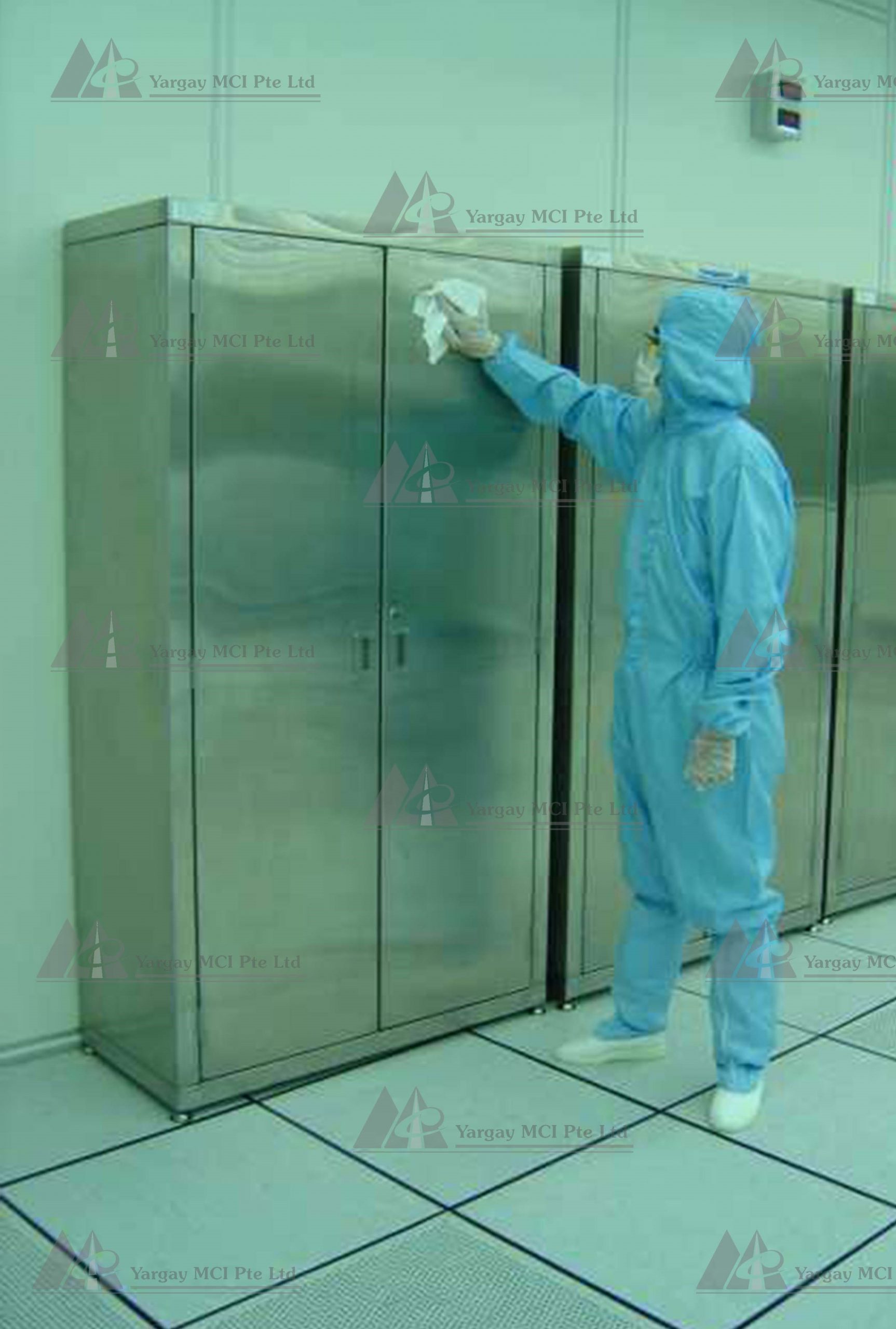
Any material, substance, particle, chemical, or other undesirable substance that is unwanted that can taint, pollute, defile, make impure or unclean, or adversely effect the process or product. Contamination can take many forms such as: particulate, chemicals (including gases), electro-static discharge, viables (bacteria, molds, etc.), and other forms.
Particles are measured in microns. If you were to slice a 1-inch cube into 25,400 equal pieces, each slice would be 1 micron thick. (So thin that you could not see it.)
Since cleanroom facilities contain invisible particles that can cause defects, we need to have a way to determine their sizes and possible sources. These particles cannot be seen with the naked eye and yet may cause serious loss to our client and to their ability to manufacture devices without defects. We measure the amount of particles in the air with a device known as a particle counter. This helps us to determine when to perform or restrict certain activities.
Bacteria
.01 to 1.0 Microns
Dust
1.0 to 10 Microns
Mold
1.0 to 10 Microns
Hair
10 to 100 Microns
Pollen
10 to 100 Microns
Following are some common sources of contamination. This list in by no means exhaustive, but it gives you and idea of the types of things to be aware of when you are looking for the source of contamination.
Hair
Skin Flakes
Saliva
Make-Up
Lotions
Perfumes
Coughing / Sneezing
Excessive Movement
Perspiration
Wood
Paper
Cardboard
Tobacco Products
Gum, Cough Drops
Packing Materials
Duct Tape
Dirty Clothing
Chemicals
Caulks and Paints
Aerosols
Ions (Rust)
Permanent Markers
Non-Cleanroom pens
Smoke
Thinners /Solvents
Food and Drink
To combat the tremendous amount of particulate released by the human body, cleanroom personnel are asked to wear special garments that are restrictive and may be uncomfortable if the working conditions (temperature, humidity) are not carefully controlled.
People are dressed in booties, gloves, helmets, hoods and special facemasks that are not part of a normal experience. You are also asked to move slowly, to clean up dirt you cannot see, and to follow practices and procedures that may not immediately make sense.
The approach to cleanroom is designed in steps so as to ensure that every effort has been made not to introduce contaminants into the cleanroom.
“Humans are walking, breathing, waste pits from a microbiological perspective and there is no indication we are going to evolve into anything cleaner.”
Human dust combined with sebum will tenaciously adhere to and contaminate surfaces, creating contamination problems that are simultaneously bacterial, chemical and particulate.
There is an additional complicating factor – normal human activity. Humans breathe, sneeze, cough, talk and move around. Body and breath temperatures cause heat turbulence in addition to air turbulence.
People slough off huge numbers of particles a half micron and larger and these are propelled around by air and body movement. Some examples of how many 0.5 micron and larger particles can be released by simple movement are shown below. Vast amounts of contamination need to be controlled in a cleanroom environment.
Activity
Particles Release
Seated
100,000 particles per minute
Moving 2 miles per hour
5 million particles per minute
Moving 3.5 miles per hour
7.5 million particles per minute
Moving 5 miles per hour
10 million particles per minute
Type
Source
Damage Potential
Metallics
Vacuum cleaner motor brushes, wear of A/C units, printer wear, raised floor and grid.
Electrically conductive, magnetically attracted to micro-circuits.
Carbonaceous
Automobile exhaust, tobacco smoke, printer toner, oxidized organic material, paper dust.
Moisture absorbent, electrically conductive, combustible.
Synthetic Fibrous Particulate
Operator clothing, carpeted floor tiles.
Low melting point, moisture absorbent, some type combustible , electrically conductive.
Cement Dust/Crystalline
Improper sealing or erosion of subfloor, ionization and crystallization of cleaning fluids, nicron wire heating elements, ion air purifiers.
May be propelled at high velocity into floor cooled components, clogged filters lead to overheating of disk media.
Our initial walkthrough and consultation is provided Free-Of-Charge. Contact our Site Services Group for a free consultation.
For Sales Information: sales@yargay.com.sg


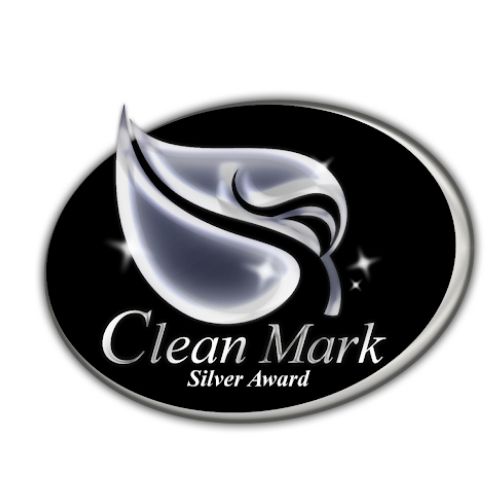
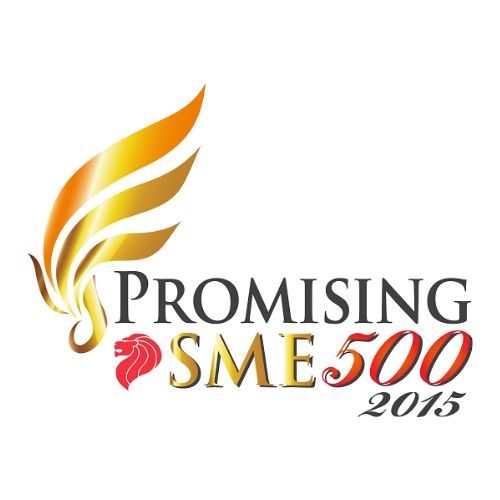
Established Since 1988
Singapore | Malaysia | Thailand | Hong Kong | Indonesia
Ⓒ All Rights Are Reserved 2023 Yargay MCI PTE LTD | Privacy Policy | Website and SEO by bestseo.sg